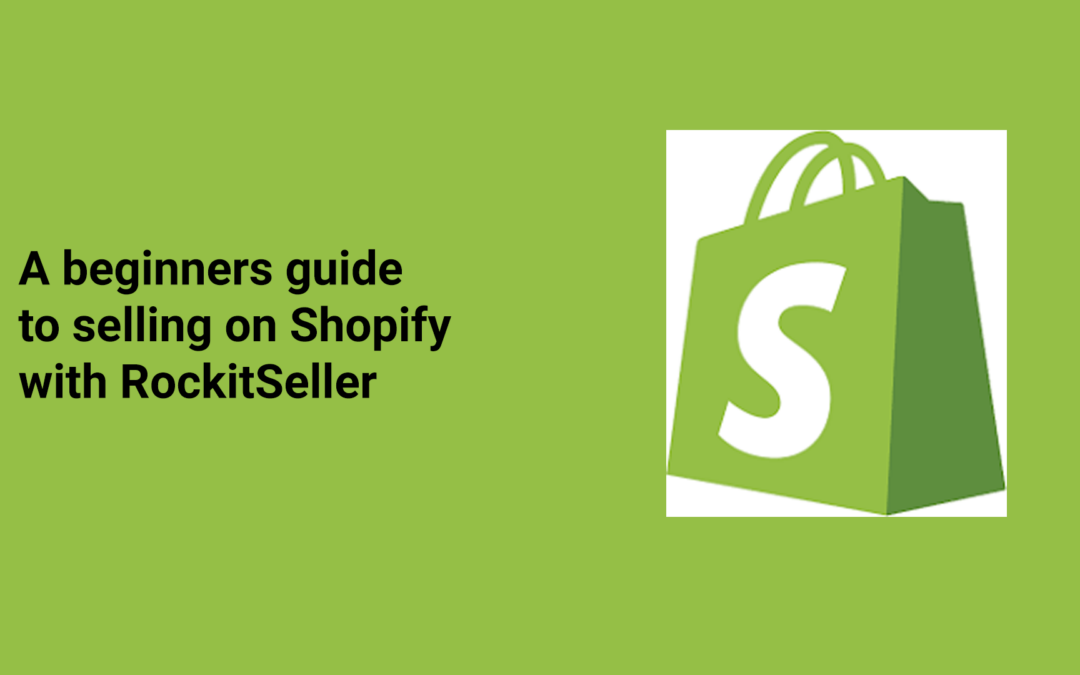In the ever-evolving world of e-commerce, choosing the right platform for your online store is crucial to its success. Shopify emerges as a popular choice, known for its user-friendly interface and versatility. This article delves into the process of selling on Shopify, comparing its pros and cons with other marketplaces like Amazon and Walmart, and highlighting how RockitSeller can enhance your selling experience.
Starting on Shopify
Step 1: Sign Up and Set Up Your Store
Begin by signing up on Shopify and choosing a subscription plan. Shopify offers a 14-day free trial, allowing you to explore its features without an initial investment. Once signed up, you can select a theme, customize your store’s appearance, add products, set up payment methods, and configure shipping options.
Step 2: Optimize Your Store for SEO
Shopify provides SEO-friendly features, but it’s vital to optimize your product descriptions, images, and use relevant keywords to improve visibility on search engines.
Step 3: Market Your Store
Utilize social media, email marketing, and other digital marketing strategies to attract customers to your store. Shopify also integrates with several marketing tools to streamline this process.
Step 4: Analyze and Improve
Shopify’s analytics tools offer insights into your store’s performance. Regularly reviewing these metrics can help you make data-driven decisions to grow your business.
Comparing Shopify with Other Marketplaces
When deciding where to sell online, it’s important to consider various platforms’ pros and cons. Here’s a comparison of Shopify with other major marketplaces like Amazon and Walmart.
Shopify vs. Amazon
- Control and Branding: Shopify gives you complete control over your store’s design, allowing for a unique brand identity. Amazon sellers operate under the Amazon umbrella, limiting branding opportunities.
- Fees: Shopify charges monthly subscription fees and transaction fees if not using Shopify Payments. Amazon charges per-item selling fees and additional fees for using Fulfillment by Amazon (FBA).
- Customer Data: Shopify allows access to customer data, enabling personalized marketing. Amazon restricts access to this information, limiting direct customer relationship building.
Shopify vs. Walmart
- Marketplace Saturation: Shopify allows you to create a niche store with less competition. Walmart’s marketplace can be highly competitive for certain product categories.
- Ease of Setup: Shopify provides a more straightforward setup process for your online store compared to the application and approval process required for Walmart Marketplace.
- Fees: While Shopify has its subscription and transaction fees, Walmart charges a referral fee on each sale, which varies by category.
RockitSeller: Enhancing Your Shopify Experience
RockitSeller is an innovative tool designed to streamline and enhance your selling experience on Shopify. It offers several key benefits:
- Automated Inventory Management: RockitSeller syncs your inventory across all your sales channels, reducing the risk of overselling and stockouts.
- Multi-channel Integration: Easily integrate your Shopify store with other marketplaces, allowing you to manage all your sales from a single platform.
- Advanced Analytics: Gain insights into your sales performance across different channels, helping you make informed decisions to boost your sales.
RockitSeller simplifies the complexities of online selling, making it an invaluable tool for Shopify store owners looking to scale their businesses efficiently.
Pros and Cons of Selling on Shopify
To provide a clearer picture, here’s a tabular comparison of the pros and cons of selling on Shopify:
| Pros | Cons |
|---|---|
| Complete control over store design and branding. | Monthly subscription and transaction fees. |
| Direct access to customer data for personalized marketing. | Requires effort in store setup and marketing. |
| Wide range of integrations and add-ons. | Less immediate traffic compared to established marketplaces. |
| SEO-friendly features to improve visibility. | Reliance on external traffic sources. |
| Powerful analytics tools for data-driven decisions. |
Conclusion
Selling on Shopify offers a unique blend of control, customization, and scalability, making it an excellent choice for entrepreneurs looking to establish or expand their online presence. While it presents certain challenges, such as the need for direct marketing efforts and managing subscription fees, the benefits of brand identity and customer relationship building are significant. Tools like RockitSeller further enhance Shopify’s appeal by offering solutions to streamline operations, integrate with multiple channels, and analyze performance comprehensively. By carefully weighing the pros and cons and leveraging available tools, sellers can effectively harness the power of Shopify to achieve their e-commerce goals.

